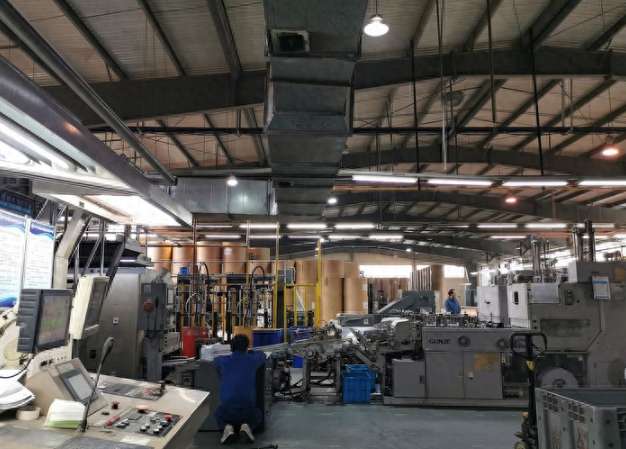Urban Rail Transit Embraces Intelligent Innovation
Advertisements
In recent developments within the dynamic urban landscape of China, the construction crews at the Taiyuan Metro Line 1 site are actively engaged in safety operational assessments as they prepare for the imminent launch of this significant transportation route. According to Li Cong, the project manager from China Railway 22nd Bureau, the new line will connect seamlessly with Metro Line 2, essentially crafting a robust transportation framework across the city. This integrated system is set to facilitate effortless transfers between the train station and the airport, thereby enhancing convenience for daily commuters and travelers alike.
Urban rail transit has proved to be an essential component in the evolution of public transport systems across major cities, offering advantages such as high capacity, speed, low energy consumption, minimal pollution, and robust safety. The latest figures released by the Ministry of Transport reveal that by 2024, China is projected to add 18 new urban rail lines, expanding operational segments by 27 and covering an additional 748 kilometers. These developments align with an anticipated 40.85 million train operations throughout the year, resulting in a passenger volume of 32.24 billion – a significant increase of 2.8 billion compared to 2023, reflecting an annual growth rate of 9.5%. By the end of December 2024, the nation will have 54 cities operating a total of 325 urban rail lines, amounting to an impressive 10,945.6 kilometers of rail track and 6,324 stations serving the public.
Breaking this down further, a total of 43 cities have operational subway and light rail systems consisting of 267 lines, while 16 cities feature monorails, maglev, and regional rapid transit lines totaling 25 routes. Additionally, 18 cities are utilizing trams and automated guided systems, which together help alleviate traffic congestion and foster stronger regional connectivity. A notable instance is the Suzhou Metro Line 8 which began operations in September 2024. This line effectively completes a connected loop with seven existing routes, as described by Yang Lu, project leader of the China Railway Fifteenth Bureau Group. The introduction of Line 8 marks a pivotal moment for Suzhou, significantly enhancing its metro transport capabilities and further integrating it with major cities in the Yangtze River Delta such as Shanghai, thus promoting the region's coordinated development.

With urban metro mileage nationally surpassing 10,000 kilometers and cities like Beijing and Shanghai exceeding 800 kilometers in operational distance, the challenge of maximizing the advantages of these networks to improve the rail transport system becomes critical. The newly enacted "Urban Public Transport Regulations," which will take effect on December 1, 2024, underscores the government's commitment to encouraging the adoption of new technologies, renewable resources, and advanced equipment within public transit systems. This aims to elevate the level of information technology and intelligence in urban transportation, foster a transition toward eco-friendly and low-carbon operations, and ultimately enhance both operational efficiency and management standards.
Experts project that the future of urban rail systems extends beyond mere transit to a more sustainable and intelligent paradigm. As such, many regions are focusing on smart technologies as a key area of advancement. By leveraging cutting-edge innovations such as 5G and the Internet of Things (IoT), cities can deploy environmentally-friendly materials and energy-efficient techniques, continually refining operational line designs, optimizing resource allocation, enhancing station functionality, and improving both travel efficiency and passenger experience.
Construction methodologies are also evolving to integrate more precise technologies. For instance, on February 10, at precisely 10:48 AM, the first segment of the 25-meter track for Fuzhou Metro Line 6 was laid with remarkable accuracy, signifying the commencement of the rail-laying phase. Project manager Shen Zhiyong from China Railway Electrification Bureau emphasized that to ensure top-quality execution, the project team innovatively adopted Building Information Modeling (BIM) technology. This 3D digital model of the rail zone integrates designs from various disciplines such as track, structures, and power supply, allowing for precise identification of construction sites and effectively mitigating potential errors. Additionally, a smart monitoring and scheduling system leveraging 5G technology has been established at the track-laying base, equipped with high-definition cameras and sensor networks to monitor the site in real-time via a mobile application, accurately tracking the location of workers and vehicles while transmitting operational commands for comprehensive and round-the-clock surveillance and scheduling.
Furthermore, advancements in ensuring greener and more efficient operations are at the forefront of recent initiatives. On December 28, 2024, coinciding with the 20th anniversary of the Shenzhen Metro, five new subway lines were inaugurated with a focus on sustainable transformation, clean energy utilization, and energy consumption reduction. Zhang Yu, the general project manager at China Railway Construction Southern Investment Co., noted that Phase IV of Line 3 is noteworthy for being the world’s first metro line to implement a centralized air conditioning system using a single fan for return air. This innovative system combines functions like air supply and smoke evacuation, alongside dual-side air supply at stations, which not only ensures effective ventilation but also reduces energy consumption by approximately 15%. The Liyuan Station has also installed a solar power generation system, expected to produce around 277,000 kilowatt-hours annually, potentially satisfying nearly 20% of the station’s electricity needs.
As we look into the future, experts foresee a continual evolution in urban rail transport systems fueled by the integration of smart scheduling, automatic controls, comprehensive systems, automated ticketing and checking options, alongside real-time information systems. These advancements are poised to significantly enhance network layouts, operational efficiencies, safety measures, and service quality. Such improvements will provide a robust foundation for perfecting urban transit frameworks and significantly enhancing the commuting experience for the populace.